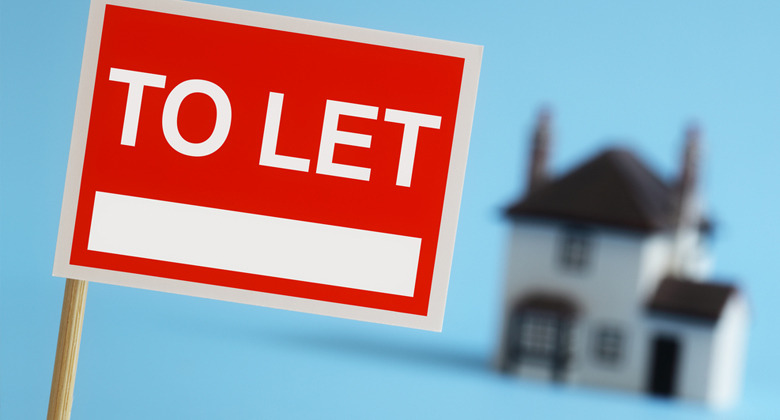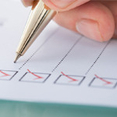Which Type of Property is the Best Investment?
Both new and experienced buy-to-let landlords will find themselves, at times, torn between which property to buy. While there are numerous factors for landlords to consider before making their final decision, a buy-to-let property is an investment, first and foremost. Therefore, the long-term return on investment on their property purchase should be a primary consideration of private landlords.

How do I Know Which Property Will Offer the Best Return?
Typically, when working out the expected return on investment for a buy-to-let property, as a landlord you will look at two things:
- The potential capital gains on the property
- The rental yield of the property
Some landlords will focus on one and not the other, but it is definitely worth having an appreciation of both.
What is Capital Gains?
On the face of it, calculating your capital gains on a property is fairly straightforward.
Let’s say you are looking at buying a property for £200,000.
In doing your research before buying a property, you are able to discover, that for the type of property you are looking at in this
specific region, house prices grow an average of 2.5% per year.
Therefore, based on the purchase price, at that rate of growth the property would be worth in the region of £250,000 in 10 years’
time. Assuming you break even on mortgage costs, finding tenants, and property
maintenance against what you receive in rent, you can project a £50,000 profit in 10 years. While you would need to wait until the end of
the 10 years to sell the property, you could take this as a £5,000 per year return on your investment.
Although this is a simple calculation to make, most landlords also want to work out the rental yield on the property. After all, why settle
for a £50,000 capital gain in 10 years when you can make some money during the time you own the property too?
What is Rental Yield?
It’s quite simple to calculate your rental yield.
If you want to skip this part and work out your potential rental yield now, you can
access Upad’s rental yield calculator here.
There are different methods of calculating rental yield. At Upad, we keep it simple and use the most commonly used method of calculating
expressing rental yield.
To discover your rental yield, you:
- Calculate your annual rental income from the property (or projected income if you haven’t purchased yet), less all running costs
associated with the property. Costs you deduct should include mortgage payments,
landlord insurance, ongoing repairs and maintenance, and any additional
costs you may incur via your letting agent, such as additional property inspections.
- Divide the result of the first calculation by the total amount invested in the purchase of the property. Total amount invested means you
should include all fees and taxes that you paid, not just the actual price of the property itself.
Based on the same property we used in the capital gains example, let’s take a look at a calculation of rental yield:
Annual rent = £18,000
Annual costs = £10,000
Net annual income = £8,000
Total investment = £210,000
£8,000 / £210,000 = 0.039. 0.038 x 100% = Rental Yield of 3.8%
Does This Mean my Rental Yield Changes as My Property Grows in Value?
This depends on how you calculate your rental yield. If you calculate your yield based on your investment, then no, your rental yield
won’t change.
However, another option is to calculate your yield based on the value of your property.
Let’s say that your £200,000 property does indeed gain value at a rate of 2.5% per year, and in 10 years is
worth £250,000.
If all aspects of your buy-to-let were stable over that time (you didn’t increase the rent and your property running costs
didn’t increase either, for example), the above calculation would then look like this:
Annual rent = £18,000
Annual costs = £10,000
Net annual income = £8,000
Property Value = £250,000
£8,000 / £250,000 = 0.032. 0.032 x 100% = Rental Yield of 3.2%
Based on calculating rental yield using this method, your rental yield has decreased from 3.8% to 3.2%
How Can I Maintain My Rental Yield?
You want the value of your property to increase, irrespective of whether you’re specifically targeting the capital gains benefit.
So, ensuring your property doesn’t increase (*should this be decrease?) in value obviously isn’t a way to ensure you maintain your
rental yield!
This leaves you with two options:
- Increase your rental income from the property.
- Reduce your costs associated with running your buy-to-let.
There are some within the buy-to-let community who advocate maintaining your yield by increasing rents annually in line with the property
value market.
Although this seems at first glance to be a logical thing to do, as a landlord you need to consider a variety of things, not least whether
doing this may alienate your tenants. Aim to keep an eye on how rental values for similar types of properties in your area change over time.
If you notice that rents seem to be stable and other landlords aren’t increasing their rents very often, it’s likely that your
tenants will notice too. Is it worth risking losing tenants to maintain a specific rental yield figure? After all, if your tenants leave and
you have a void period, you could even find yourself making a loss while your property is empty!
To maintain or increase your rental yield it is smart in the first instance to look at where you can reduce your costs. This might mean a
new buy-to-let mortgage deal, a better landlord insurance package, or a
different type of rent protection cover. The beauty of reducing your costs is that if you
are able to increase the rent at a later date, your rental yield will grow even more!
So, What is a Good Rental Yield?
This really depends on each landlord’s individual circumstances. It is up to you to think about what a good rental yield for you looks
like. To decide this you will need to consider your reasons for investing in a buy-to-let property and what your long-term investment goals are.
To help you in deciding what would represent a good rental yield for you, we recommend reading the below articles from Upad.
Top Tips for Market Busting Rental Yields
Upad Landlords: What is Your Minimum Rental Yield?
How
do You Choose the Right Buy-to-Let Investment?
Remember to also use our rental yield calculator as well as
our other landlord calculators, which will really help you get to grips with the
numbers when it comes to your buy-to-let business.
Top Landlord Tips for Calculating Rental Yield
Take Void Periods into Account
Although the calculation for working out your rental yield uses the annual rental figure, this assumes that your property is going to be
occupied for all 12 months of the year. Depending on the type of lets you offer or the type of tenants that live in your property, you could
well find yourself with at least one month of the year when you don’t have a tenant in there.
When calculating your rental yield, continue to use your annual rental figure, but “stress test” these figures by calculating
what your yield would be if you had your property empty for one, two, or three months throughout the year.
Not only will this highlight whether your buy-to-let investment is sustainable allowing for void periods, it will also focus your mind
towards cost control.
Look at Market Rents Before Buying
It is unbelievably common for landlords to buy a property in an area they don’t know too well, assuming that they will be able to
charge a specific rent amount and have high demand to live in it. Many private landlords become unstuck or don’t make the money they
want to early in their buy-to-let investment career for this reason. A property can seem like fantastic value based on price, but it will
quickly become a problem if you can’t find anyone to live there.
As part of the process of buying, ensure you thoroughly research whether you’re getting a good deal in terms of the purchase as well
as the rent levels you’re going to be able to collect.
Include ALL Costs from Your Deductions
There are landlords who think they achieve a fantastic rental yield, but actually because they haven’t included certain costs they
make nowhere near what they believe they do.
By calculating your rental yield as accurately as possible, you will not only be able to understand exactly what you can make from your
buy-to-let, it may help you avoid buying a completely unsuitable property.
Here’s a handy list you can refer to of running costs you ought to include:
- Tenant acquisition fees.
- Landlord insurance costs.
- Rent protection insurance costs.
- Redecorating and property maintenance costs during tenancies.
- On-going letting agent fees.
- Running costs during void periods, which will typically include at least council tax and utilities.
- Costs of any furniture and white goods you supply in the property (you may want to include these in your investment figure instead).
Also, here’s a list of what you ought to include in your property investment figure:
- The actual cost of the property.
- Any mortgage arrangement fees.
- Solicitor’s fees.
- Surveyor’s fees.
- Costs of any initial repairs made to the property prior to tenants moving in.
- Any additional legal fees you incur.
Avoid Estate Agent or Property Developer Sales Speak
If an estate agent or a property developer at a new build site meets you and hears that you’re looking at buy-to-let, they’ll
be beside themselves trying to talk up the incredible rental yields that you’ll be able to achieve should you buy one of their properties.
By all means, take their brochures and any information they can provide, but be sure to do your own research and calculations, as most of
the time these grand proclamations will be based on the property value and rent income alone, with none of the additional costs considered.
They could be promising you rental yields of 10% while the truth is the real yield will be close to 3% or 4%.
Which Property is for Me?
Ultimately, it is up to you and what you want to achieve as a private landlord.
The best approach is to look both at your rental yield and your potential capital gain. It is often the case that landlords find they can
gain excellent rental yields from low cost properties, but are unlikely to see a significant capital gain in the long-term. Likewise, the
opposite is also true, and areas with high capital gain potential are often those where rental yields may be lower.
Take the time to calculate both the potential capital gain and your potential rental yield from each property you consider investing in.
This will leave you in a great position to invest and be a successful landlord.
Remember to register with Upad to receive regular landlord updates as well as tax and legal tips and advice, and to potentially save
yourself thousands of pounds per year on high street letting agent fees.







